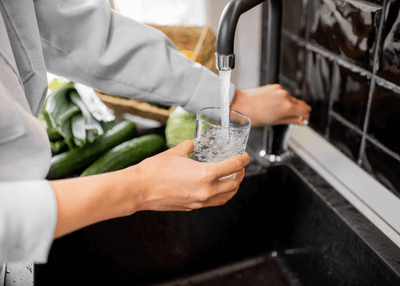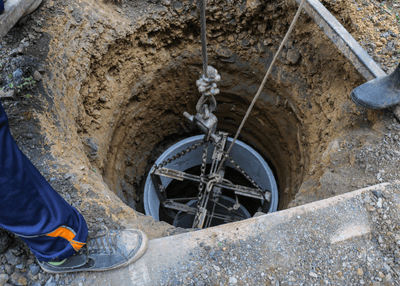Eric Roy, Ph.D. | Scientific Founder
Since The Environmental Working Group recently released a report about the prevalence of chromium-6 in drinking water supplies, our email and support line have been filled with questions about the toxic heavy metal. The purpose of this article is to address a lot of these FAQs, including the answer to "what is chromium-6?," and to discuss how to remove chromium 6 from drinking water.
Is Chromium-6 the Same Thing as “Regular” Chromium?
No. So what is chromium-6? Chromium comes in a variety of chemical “flavors.” Most forms of chromium (e.g. chromium metal, trivalent chromium) are not toxic. These are the types of chromium used to make stainless steel and are found in dietary supplements. There is no reason to be throwing away stainless steel cookware!
Chromium-6 (or hexavalent chromium), on the other hand, is an extremely toxic form of chromium, and is known to cause cancer, even at very low concentrations. In popular culture, chromium-6 is the chemical that was at the center of the Erin Brockovich story, which was made into a movie starring Julia Roberts.
Where Does Chromium-6 Come From?
Unfortunately, chemicals containing chromium-6 are useful in a number of industrial processes, which means that chromium-6 can enter drinking water supplies through waste streams that enter rivers and ground water. Industries that generate chromium-6-containing waste include: steel production, leather tanning, textile manufacturing, wood preservation, and electroplating.
How Is Chromium-6 Regulated?
It's not. In 1991 EPA set a Maximum Contaminant Level (MCL) for total chromium (all kinds) in drinking water of 200 parts per billion. The structure of this regulation is flawed because it treats non-toxic forms of chromium in the same manner as highly toxic chromium-6. To put it in perspective, California (which has tighter regulatory conditions that the EPA) has set a proposed limit of 20 parts per trillion for chromium-6, a level that is 10,000 times lower than what the current EPA regulation is for total chromium. Part of the challenge in formulating a proper regulation is that advanced detection procedures and equipment are required to measure things at part per trillion concentrations.
Are the Recent News Articles the Result of a Recent Spike in Chromium-6 Concentrations?
No. There is no sudden rise in chromium-6, the media coverage is just shining light on an existing situation.
What Can I Do To Reduce Exposure To Chromium-6?
Unlike lead, which leaches into water from pipes, chromium-6 comes from the source water itself, so flushing pipes does not reduce concentrations of chromium-6 in drinking water. Boiling water also does not reduce/remove chromium-6.
If you want to remove chromium-6 from your water, you need to filter it using a high end water filter. Filtration pitchers and common fridge filters DO NOT filter chromium-6 from water. A new generation of water filters that use chromium 6 removal media are extremely effective at filtering chromium-6 (and other contaminants) from water. Reverse osmosis is also a viable way to remove chromium 6 from water for people who are willing to accept the drawbacks, including low flow rate. We recently wrote a more in depth article on how to filter chromium 6 from water.
If you have any questions about filtering chromium-6 from your water, we encourage you to take advantage of Hydroviv’s “Help No Matter What” approach to technical support, where we will help you select an effective water filter system, even if it’s not one that we sell. This free service can be reached by emailing support@hydroviv.com
Update April 23, 2017: We have published an article specifically on how to filter chromium 6 from drinking water. See it HERE
Other Articles We Think You'll Enjoy
How To Filter Chromium 6 From Drinking WaterLead Contamination In Pittsburgh's Tap Water
Why TDS Meters Don't Tell You Anything About Lead











